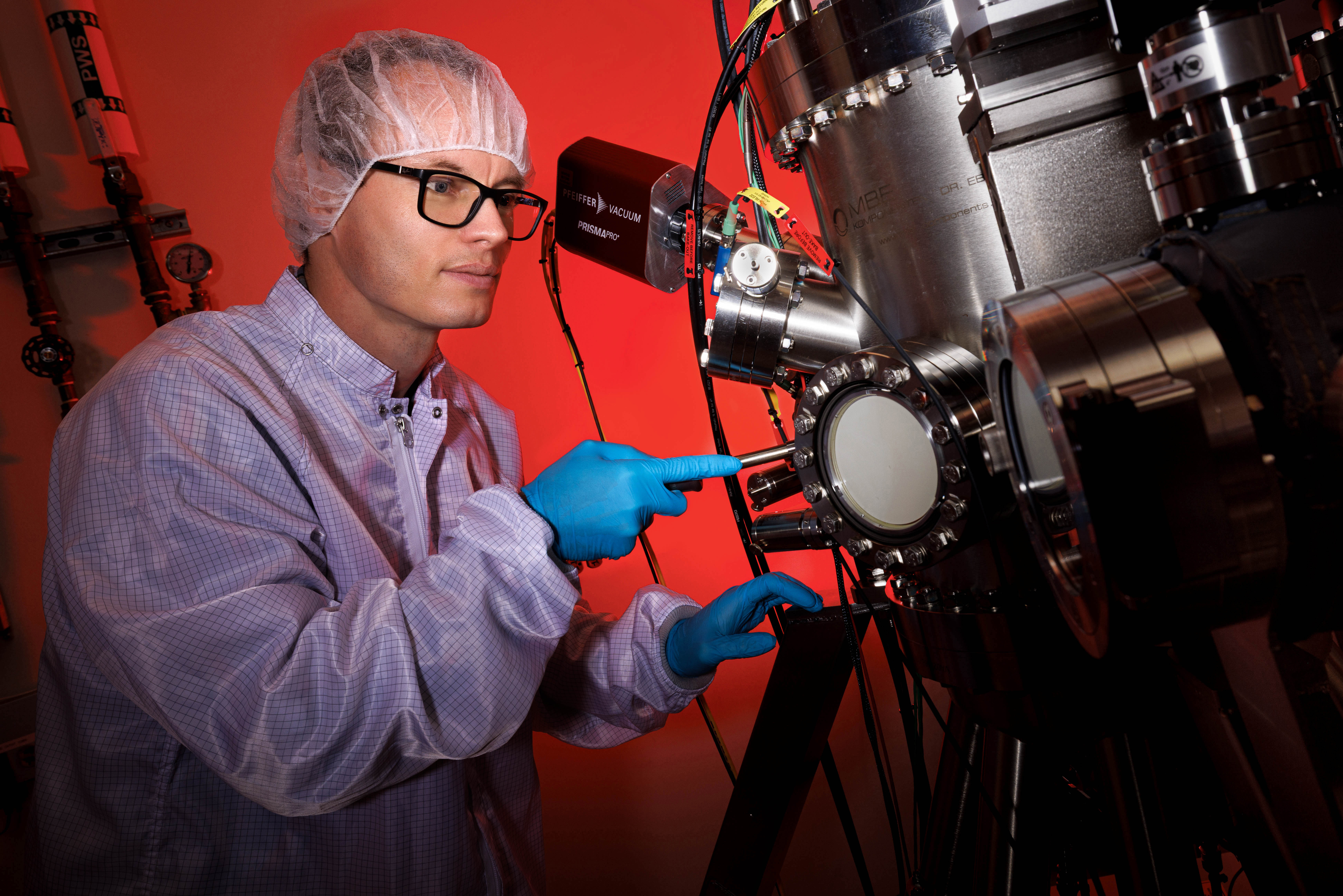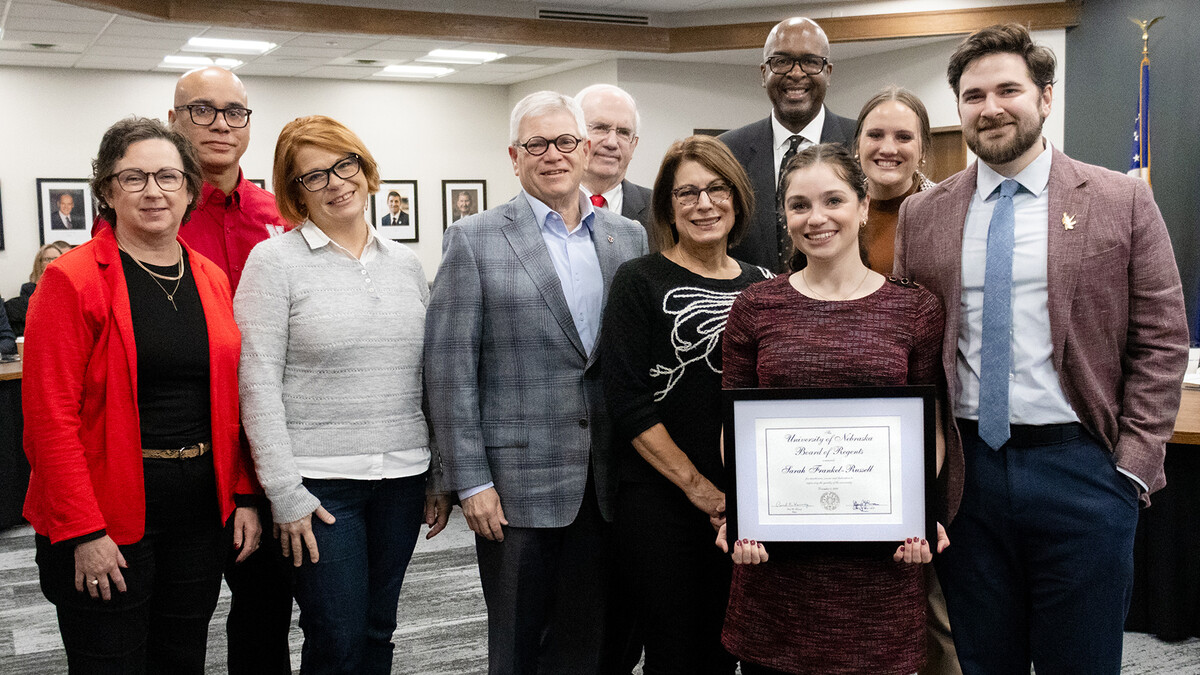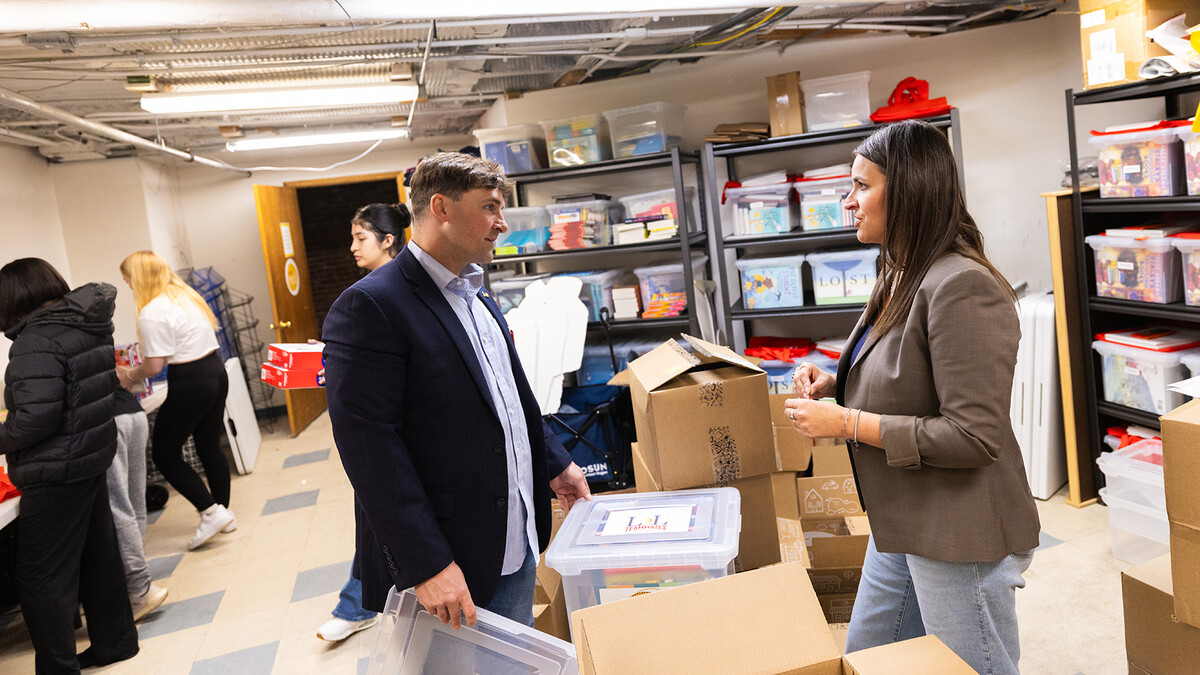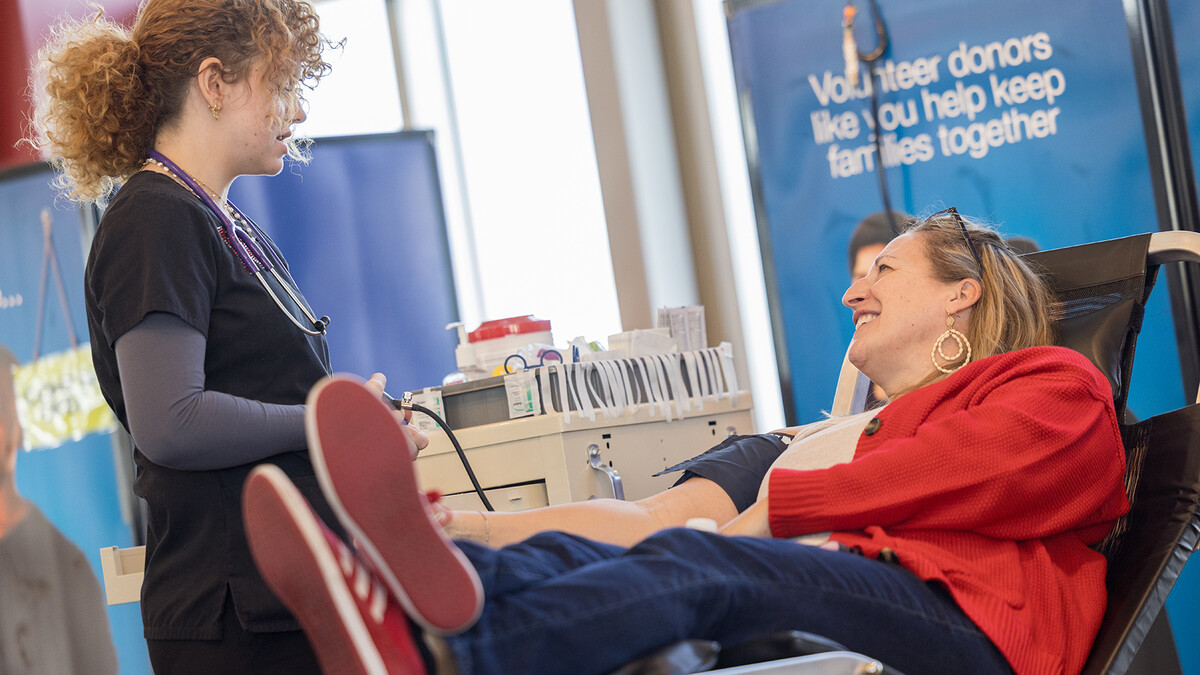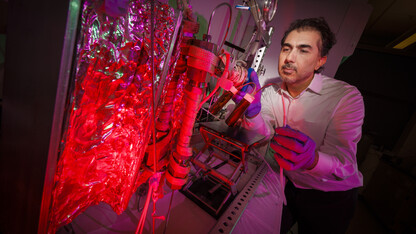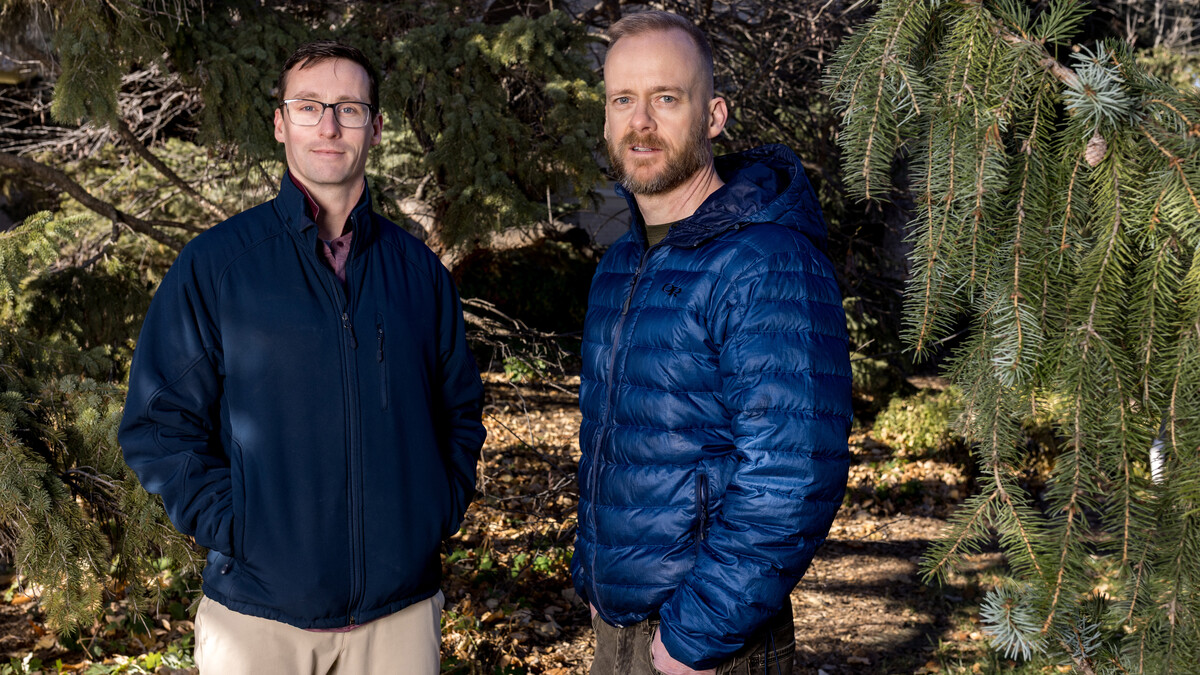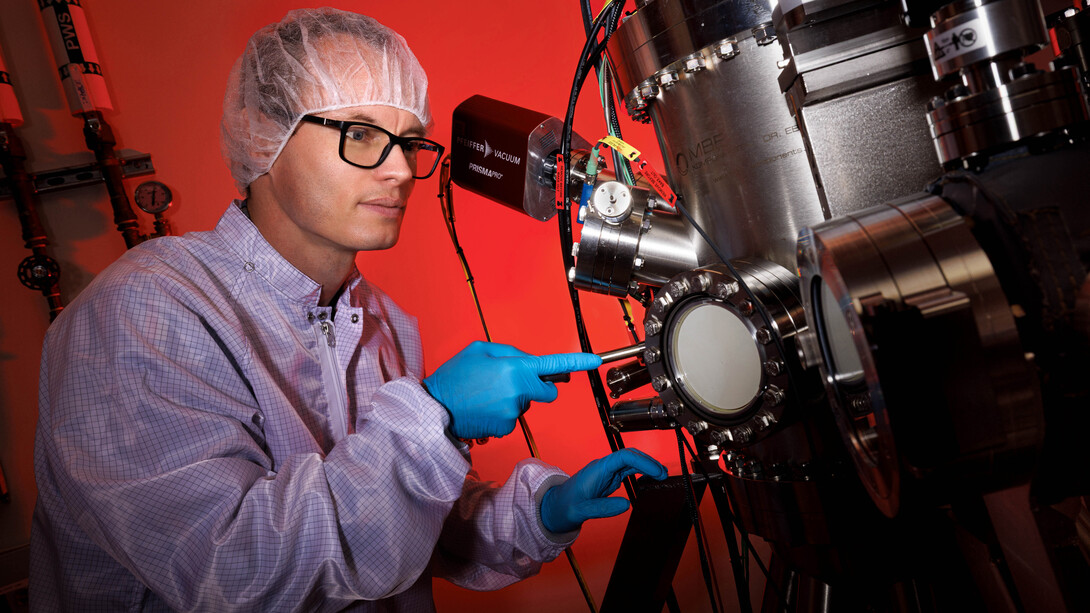
A University of Nebraska–Lincoln physicist is studying how disordered, noncrystalline materials could power the next generation of microelectronics, including computing systems that mimic the human brain.
Robert Streubel, assistant professor of physics and astronomy, has been awarded a five-year, $849,399 grant from the National Science Foundation’s Faculty Early Career Development Program to pursue this research and related educational ventures.
Streubel’s CAREER project focuses on amorphous magnetic materials that lack a regular atomic structure of crystals. Such systems may offer advantages for technologies, such as physical reservoir computing, which mimics the human brain’s computing approaches. His project also aims to engage high school students in physics by creating art from physical principles.
Streubel’s team will investigate how the arrangement of atoms, even when seemingly disordered and out of their normal positions, can influence magnetic behavior and electronic properties. By adjusting how these materials are made and applying physical changes like bending or stretching, researchers hope to unlock new ways to control these properties.
Ordered, crystalline materials require specific substrates, making them less versatile for applications and difficult to manipulate. Disordered materials offer the potential for greater manipulation and versatility because they are more sensitive to short-range order and can be tuned by applying voltage, strain or other external stimuli. They can also be grown on a wider range of substrates.
The findings could lead to better, faster and more energy-efficient devices.
“This work could fundamentally shift how we think about disorder in materials,” Streubel said. “Instead of being a limitation, disorder might actually be the key to unlocking new functionalities.”
Neuromorphic computing performed on hardware level, inspired by the human brain’s structure and function, is considered the next evolution in artificial intelligence. Currently, AI relies on binary supercomputers to process billions or even trillions of parameters, while neuromorphic systems use energy-efficient electrical and photonic physical networks modeled after biological neural networks.
The CAREER grant also funds educational components to strengthen the STEM workforce. One is aimed at engaging physics students through art. Streubel explained that Nebraska high school students will have the opportunity to participate in workshops where they learn about physical principles and their application to create visual art.
“[His outreach program] START SMART aims to broaden participation in STEM by making complex scientific concepts more accessible and engaging through visual storytelling,” Streubel said. “The big idea is that showing science visually can help more people get curious and excited about it.”
A graduate-level course on advanced materials characterization will better prepare students to conduct research at UNL and in their future career. Mentorship and research opportunities will also be offered to students from high school through graduate school.
The National Science Foundation’s CAREER award supports pre-tenure faculty who exemplify the role of teacher-scholars through outstanding research, excellent education and the integration of education and research.
